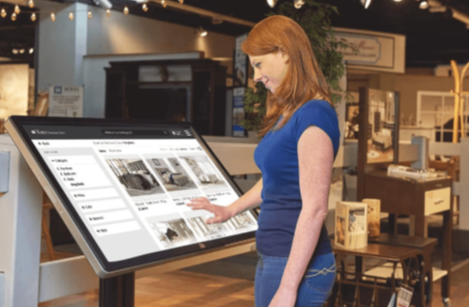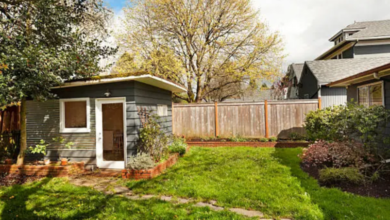
Designing a Self Service Kiosk Experience That Balances Speed with Upsell Opportunities
If long lines, missed add-ons, or checkout confusion are eating into sales and staff time, that feels frustrating and avoidable. This short guide addresses that problem and provides clear, practical steps to create a faster, more profitable kiosk experience without discouraging guests. It draws on real product features and operation-ready tactics so decisions stay grounded and pragmatic.
This blog demonstrates how to craft a tight ordering funnel, incorporate one or two tasteful upsell opportunities, and select hardware and payment flows that align with traffic patterns. It then walks through integrations with POS and inventory, accessibility fixes, and simple A/B tests to measure what works. Finally, there’s a compact rollout checklist and troubleshooting tips for the first weeks.
Along the way, learn why a self-service kiosk must be designed around quick decisions and where gentle recommendations can raise average checks. For vendor-aligned details and implementation options, see Hashmato’s self service kiosk as a practical reference.
Why Speed Matters For Kiosks
Fast ordering is the core benefit customers notice first. Customers expect quick moves through the queue, especially in busy US QSRs and cafes. A kiosk that shortens time-to-order raises throughput, reduces peak-hour bottlenecks, and improves guest sentiment. Fast service also lowers staff stress and shifts team time toward food delivery and quality checks. Real-world vendor materials show that kiosks reduce wait times and increase order accuracy, freeing staff and creating opportunities for subtle offers.
When ordering is quick and predictable, there’s room to add helpful suggestions that raise the check size.
Read Also: Is AI Image Editing as Accurate as Traditional Photoshop Techniques?
Design Fast Flows
Make every screen pull one weight; a single, obvious action. Designing the funnel means stripping steps and labels to the minimum needed to complete a purchase. Use big tap zones, short labels, progress markers, and a single prominent confirm button on each screen. If customization is required, present core options first and advanced options behind a single “customize” step.
Quick checklist of focused flow items:
- One main call to action per page.
- Image + one-line description for each item.
- Inline modifiers (size, extras) that don’t force a full page swap.
- Visible cost update as selections change.
- Easy access to the back button and order summary.
A tight funnel reduces decision friction and keeps order time low.
Upsell Without Slowing Service
Offer one timely suggestion that is easy to accept or dismiss. Upsells must be contextual, brief, and optional. Place a single high-value suggestion on the order review screen or a tasteful combo prompt right after a main item is chosen. Use simple language and clear pricing so customers can easily accept the add-on with one tap.
Practical upsell tactics:
- Suggest a complementary item that matches the main choice.
- Offer a size or combo upgrade with a clear price difference.
- Present a time-limited deal (e.g., “Add fries +$1 for this order”).
- Make the prompt skippable with a single dismiss button.
Keep suggestions short, relevant, and immediately actionable so the line keeps moving.
Interface Best Practices
Clarity beats cleverness on a kiosk screen. Use high-contrast type, large numbers for prices, and photos sized consistently. Group menu items with easy filters (meals, sides, drinks). Display the running total and taxes for the US market to avoid any surprises.
Interface quick tips:
- Top bar showing order summary and item count.
- One-tap edit from the summary page.
- A prominent exit/finish button to close the flow fast.
- Language selector and large-print mode are visible from the first screen.
A forgiving interface minimizes false starts and abandoned orders.
Pricing And Hardware Choices
Kiosk type (tabletop, wall-mounted, freestanding) and screen size influence throughput and durability. Consider built-in card readers, contactless payment modules, and enclosure grade when the unit is located near outdoor areas or in high-traffic zones.
Hardware selection checklist:
- Select a kiosk type based on peak traffic estimates.
- Select payment modules that align with local payment preferences.
- Plan for spare parts and on-site support in the rollout budget.
- Include mounting, power, and network redundancy in cost estimates.
Budget for the total cost of ownership, not just the sticker price.
Integrations And Operations
The kiosk is only as good as the systems it talks to. Real-time synchronization with POS, inventory, and kitchen displays prevents lost orders and incorrect items being prepared. Integration also enables the kiosk to display accurate item availability and automatically apply promotions.
Integration priorities:
- POS sync for orders and payments.
- Inventory updates so sold-out items are hidden.
- Kitchen display or printer routing for clear preparation.
- Analytics hookup for tracking acceptance rates and AOV.
Integrations transform the kiosk from a standalone device to a fully operational tool.
Payment And US Compliance
Make payment quick and familiar for Americans. Support EMV, contactless NFC wallets, tap-to-pay, and stored-payment tokenization to lower checkout time. Display tax lines for the relevant state and provide emailed receipts to reduce paper handling. Use a certified PCI solution or third-party payment gateway to minimize liability.
Fast, trusted payments close orders with minimal friction.
Personalization And Data Nudges
Use small, relevant data cues to guide choices without pressure. The time of day, item popularity, and simple past-order signals can make suggestions feel more helpful. For example, highlight breakfast combos in the morning or family packs at dinner. Machine-driven recommendations should be conservative: favor one clear call to action over many small nudges.
Personalization examples:
- Time-based menu ordering.
- “Popular today” items on the home screen.
- One-click re-order for returning guests.
- Limited-time bundle prompts that show savings.
Simple, useful personalization raises conversion without adding delay.
Accessibility And Inclusion
Design for all guests and broaden acceptability. Offer language selection, high-contrast text mode, and clear iconography. Add audio guidance or large-button layouts for guests who prefer hands-free or low-vision use. Placing these options upfront cuts confusion and speeds adoption among older guests or those using assistive tech.
Improving accessibility expands the customer base and reduces staff assistance.
Testing, Metrics, And Iteration
Measure what matters and iterate quickly. Track key metrics such as time-to-order, completion rate, add-on acceptance rate, average order value, and refund rate. Run A/B tests on one variable at a time, for example, single vs. combo offer or image size, and compare lift in acceptance and time penalty.
Testing checklist:
- Define baseline metrics before rollout.
- Run controlled A/B tests during off-peak hours.
- Capture qualitative feedback from staff and guests.
- Iterate small changes frequently rather than large overhauls.
Small, measured changes reduce risk and build steady gains.
Pilot, Rollout, And Support
Start small and scale with clear staff support. Pilot a single store or a small cluster during non-peak hours, train staff to assist rather than take over, and monitor kitchen load to keep service balanced. Keep spare tablets, power supplies, and a quick support script so staff can resolve common issues fast.
Pilot actions:
- Run a two-week pilot with staff feedback loops.
- Adjust menu layout and upsell copy based on initial data.
- Train staff on reset procedures and basic troubleshooting.
- Schedule remote monitoring and vendor support windows.
A staged rollout reveals real issues early and protects the guest experience.
Troubleshooting Common Problems
Expect a few bumps and handle them fast. If the kitchen gets overloaded, reduce kiosk throughput by using short hold or batch notifications. If upsell rates are low, simplify the copy or switch to a higher-value offer. Keep logs and analyze data to identify patterns like frequent cancellations or payment failures.
Rapid fixes keep operations steady while longer-term changes are implemented.
Conclusion
Focus on fast, clear ordering first, and add one well-timed upsell that guests can accept in one tap. With solid integrations and ongoing measurement, a kiosk will streamline service and increase check volume without creating friction.
If ready to match a vendor to these needs, follow a proven product page. For full product details, integrations, and implementation options, see Hashmato’s self service kiosk. That resource explains features, deployment types, and pricing ranges that are useful when planning a US rollout.




